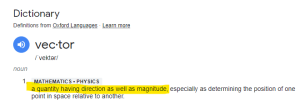
Endurica uses a fracture mechanics based description of rubber’s fatigue behavior, rather than the classical Wohler curve (ie S-N curve) approach. This is why:
1) Wohler curves in rubber show the combined effects of several nonlinear processes, but they do not easily deconvolve into useful information about the individual processes. This means that Wohler curve users struggle to trace the causes of fatigue failures any deeper than the single monolithic empirical SN curve. When the customer or the boss asks why the part is failing, Wohler curve users end up falling back on the old “rubber is mysterious” defense. Meanwhile, users of critical plane analysis + fracture mechanics are hypothesis testing. They can check what events and what loading directions are most damaging, and what material parameters (crack precursor size, strain crystallization, threshold, crack growth rate law, thermal effects, etc.) can be exploited to gain leverage and solve the issue.
2) Fatigue failure in rubber is often dominated by “special effects”: dependence on strain level, dependence on R ratio, dependence on temperature, dependence on rate, dependence on ageing, etc. The Wohler curve crowd must choose between ignoring/oversimplifying these special effects, or running an experimental matrix that rapidly scales to an infeasibly huge size as more variables are added. While fracture mechanics users obtain a wealth of information from a single test specimen (one test can probe many different strain levels, temperatures, rates, etc), Wohler curve users obtain 1 data point per tested specimen. Look in the rubber technical literature and count the number of S-N-curves that are given, relative to the number of fatigue crack growth rate curves. Google/scholar returns less than 2000 results for “rubber Wohler curve”, and 78700 results for “rubber crack growth curve”. There is a reason that crack growth rate curves outnumber Wohler curves.
3) SN based methods are not conservative. Wohler curve users end up assuming that a crack will show up perpendicular to a max principal stress or strain direction. This assumption only works when you have the very simplest loading cases, no compression, and no strain crystallization. Users of fracture mechanics + critical plane analysis don’t worry about whether they have simple loading, finite straining, out-of-phase loading, compressive loading, changing principal directions, and/or strain crystallization. Critical plane analysis checks every possible way a crack might develop and is therefore assured to always find the worst case regardless of detailed mechanisms.
4) Wohler curves are messy. They depend strongly on crack precursor size, which naturally varies specimen-to-specimen, batch-to-batch, and between lab mix and factory processes. During SN curve testing, the size of the crack is neither measured nor controlled. This accounts for the extra scatter that is typical in these tests. In fracture mechanics testing, on the other hand, the crack is measured and controlled, leading to more repeatable and reliable results. Noisy data means that the Wohler curve crowd has trouble differentiating between material or design options. Users of fracture mechanics benefit from cleaner results that allow more accurate discrimination with less replication.
A Wohler curve does have one valuable use. The Wohler curve can be used to calibrate the crack precursor size for a fracture mechanics analysis. It only takes a few data points – not the entire curve, since the crack precursor size does not depend on strain level, or other “special effects” variables. Our recommended practice is to run a small number of nucleation style tests for this purpose only, then leverage fracture mechanics to characterize the special effects.
The bottom line is that, for purposes of general fatigue life prediction in rubber, the Wohler curve method loses technically and economically to the fracture mechanics + critical plane analysis based method that is used in modern fatigue solvers.







